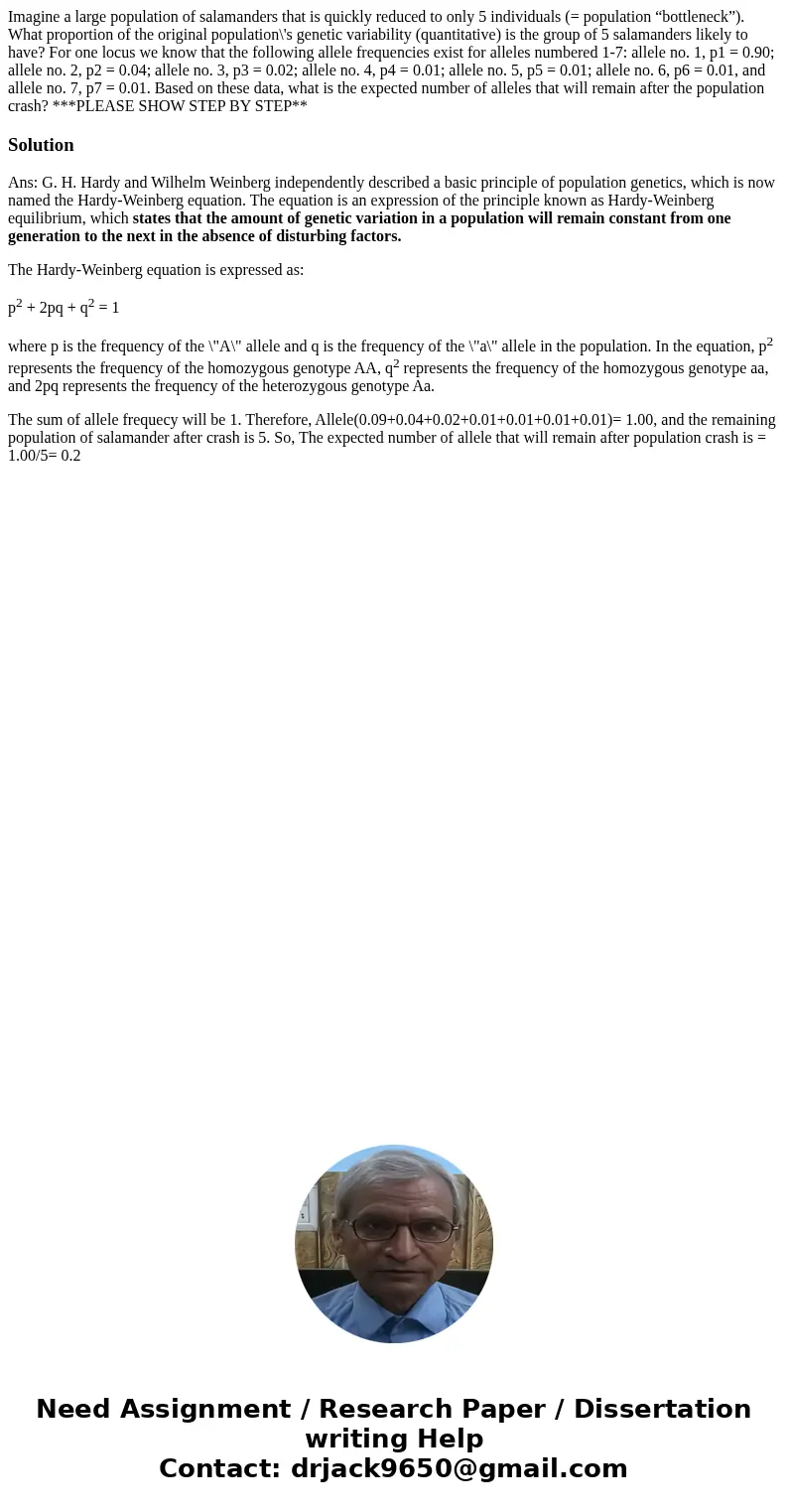Imagine a large population of salamanders that is quickly re
Imagine a large population of salamanders that is quickly reduced to only 5 individuals (= population “bottleneck”). What proportion of the original population\'s genetic variability (quantitative) is the group of 5 salamanders likely to have? For one locus we know that the following allele frequencies exist for alleles numbered 1-7: allele no. 1, p1 = 0.90; allele no. 2, p2 = 0.04; allele no. 3, p3 = 0.02; allele no. 4, p4 = 0.01; allele no. 5, p5 = 0.01; allele no. 6, p6 = 0.01, and allele no. 7, p7 = 0.01. Based on these data, what is the expected number of alleles that will remain after the population crash? ***PLEASE SHOW STEP BY STEP**
Solution
Ans: G. H. Hardy and Wilhelm Weinberg independently described a basic principle of population genetics, which is now named the Hardy-Weinberg equation. The equation is an expression of the principle known as Hardy-Weinberg equilibrium, which states that the amount of genetic variation in a population will remain constant from one generation to the next in the absence of disturbing factors.
The Hardy-Weinberg equation is expressed as:
p2 + 2pq + q2 = 1
where p is the frequency of the \"A\" allele and q is the frequency of the \"a\" allele in the population. In the equation, p2 represents the frequency of the homozygous genotype AA, q2 represents the frequency of the homozygous genotype aa, and 2pq represents the frequency of the heterozygous genotype Aa.
The sum of allele frequecy will be 1. Therefore, Allele(0.09+0.04+0.02+0.01+0.01+0.01+0.01)= 1.00, and the remaining population of salamander after crash is 5. So, The expected number of allele that will remain after population crash is = 1.00/5= 0.2

 Homework Sourse
Homework Sourse